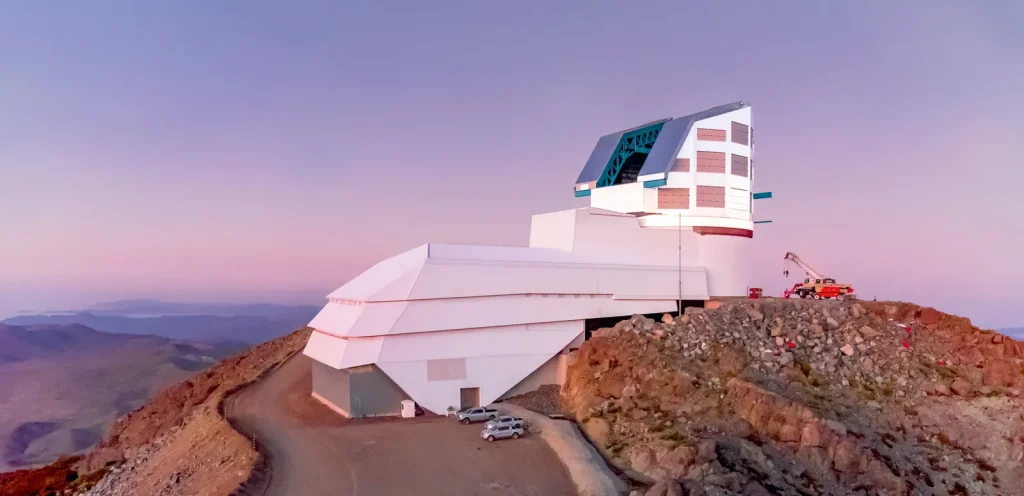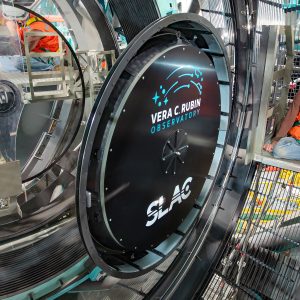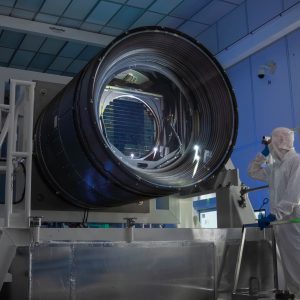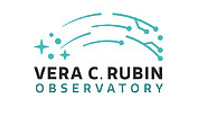Vera C. Rubin Observatory

From 2025 and for a period of 10 years, the Vera C. Rubin Observatory will systematically and repeatedly photograph the entire sky visible from Chile. This survey, known as the Legacy Survey of Space and Time (LSST), will enable the position, shape and colour of galaxies out to a distance of around 10 billion light-years (z~2) to be measured with great precision. Analysis of the resulting catalogues will make it possible to measure cosmological parameters via various probes. One of the major scientific challenges is to make progress in understanding the nature of the dark energy responsible for the acceleration of the expansion of the universe over the last 5 billion years or so. The scientific exploitation of data from the Rubin Observatory for cosmology will be carried out within the framework of the Dark Energy Science Collaboration (DESC).
The LAPP group has been involved in the Rubin and DESC projects since 2016, and is particularly interested in measuring cosmological parameters by counting galaxy clusters as a function of their mass and redshift.

Activities int LAPP
There are many contributions to make:
- Software development related to Rubin data processing
- Database
- Interactive analysis platform
- Data processing infrastructure
- Algorithms for the detection and analysis of galaxy clusters in the DESC collaboration
- Determining the mass of clusters by analysing the gravitational lensing of background galaxies.
- Performance comparisons of cluster identification algorithms: RedMapper, WaZP, AMICO
- Commissioning of the telescope and camera focal plane.
- Developments at the interface between computer science research and cosmology
Collaboration
The main partners in the project include the National Optical-Infrared Astronomy Research Laboratory (NOIRLab), the National Science Foundation (NSF) in the United States, and international institutions such as the Fermi National Laboratory, the United Kingdom, France, Germany and others.
France is a major contributor to the LSST project (Vera Rubin Observatory). France is involved in LSST through the CNRS (Centre National de la Recherche Scientifique) and the IN2P3 (Institut National de Physique Nucléaire et de Physique des Particules). These institutions are participating in the funding and construction of the telescope, as well as in the scientific collaboration to exploit the data.
Teams of French researchers, in collaboration with other international scientists, are involved in defining the scientific objectives of the LSST and in planning the observation programmes. France is therefore playing a key role in the construction and operation of this telescope, which aims to revolutionise our understanding of the universe through systematic astronomical surveys.
Actualités
- All
- Science

The Vera Rubin Observatory has ahceived a major milestone with the installation of the LSST camera on its telescope. The

The recently assembled LSST camera is now ready to make the trip from the SLAC National Accelerator Laboratory in the United States to the Vera C. Rubin Observatory in Chile, where it will be installed in May 2024.


